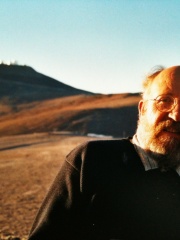
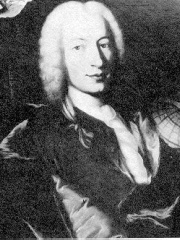
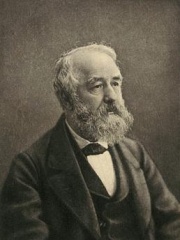
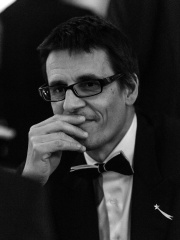
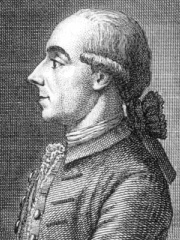
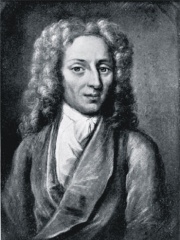


The Most Famous
ASTRONOMERS from Switzerland
This page contains a list of the greatest Swiss Astronomers. The pantheon dataset contains 531 Astronomers, 9 of which were born in Switzerland. This makes Switzerland the birth place of the 12th most number of Astronomers behind Czechia and Belgium.
Top 9
The following people are considered by Pantheon to be the most legendary Swiss Astronomers of all time. This list of famous Swiss Astronomers is sorted by HPI (Historical Popularity Index), a metric that aggregates information on a biography’s online popularity.

1. Michel Mayor (1942 - )
With an HPI of 65.73, Michel Mayor is the most famous Swiss Astronomer. His biography has been translated into 59 different languages on wikipedia.
Michel Gustave Édouard Mayor (French pronunciation: [miʃɛl majɔʁ]; born 12 January 1942) is a Swiss astrophysicist and professor emeritus at the University of Geneva's Department of Astronomy. He formally retired in 2007, but remains active as a researcher at the Observatory of Geneva. He is co-laureate of the 2019 Nobel Prize in Physics along with Jim Peebles and Didier Queloz, and the winner of the 2010 Viktor Ambartsumian International Prize and the 2015 Kyoto Prize. Together with Didier Queloz in 1995, he discovered 51 Pegasi b, the first extrasolar planet orbiting a sun-like star, 51 Pegasi. For this achievement, they were awarded the 2019 Nobel Prize in Physics "for the discovery of an exoplanet orbiting a solar-type star" resulting in "contributions to our understanding of the evolution of the universe and Earth’s place in the cosmos". Related to the discovery, Mayor noted that humans will never migrate to such exoplanets since they are "much, much too far away ... [and would take] hundreds of millions of days using the means we have available today". However, due to discoveries by Mayor, searching for extraterrestrial communications from exoplanets may now be a more practical consideration than thought earlier. Mayor holds MS in Physics from the University of Lausanne (1966) and PhD in Astronomy from the Geneva Observatory (1971). He was a researcher at the Institute of Astronomy at the University of Cambridge in 1971. Subsequently, he spent sabbatical semesters at the European Southern Observatory (ESO) in northern Chile and at the Institute for Astronomy of the University of Hawaiʻi System.

2. Jean Philippe Loys de Cheseaux (1718 - 1751)
With an HPI of 54.64, Jean Philippe Loys de Cheseaux is the 2nd most famous Swiss Astronomer. His biography has been translated into 24 different languages.
Jean-Philippe Loys de Cheseaux (French pronunciation: [ʒɑ̃ filip lois də ʃezo]; 4 May 1718 – 30 November 1751) was a Swiss astronomer.

3. Rudolf Wolf (1816 - 1893)
With an HPI of 53.67, Rudolf Wolf is the 3rd most famous Swiss Astronomer. His biography has been translated into 20 different languages.
Johann Rudolf Wolf (7 July 1816 – 6 December 1893) was a Swiss astronomer and mathematician best known for his research on sunspots. Wolf was born in Fällanden, near Zurich. He studied at the universities of Zurich, Vienna, and Berlin. Encke was one of his teachers. Wolf became professor of astronomy at the University of Bern in 1844 and director of the Bern Observatory in 1847. In 1855 he accepted a chair of astronomy at both the University of Zurich and the Federal Institute of Technology in Zurich. Wolf was greatly impressed by the discovery of the sunspot cycle by Heinrich Schwabe and he not only carried out his own observations, but he collected all the available data on sunspot activity back as far as 1610 and calculated a period for the cycle of 11.1 years. In 1848 he devised a way of quantifying sunspot activity. The Wolf number, as it is now called, remains in use. In 1852 Wolf was one of four people who discovered the link between the cycle and geomagnetic activity on Earth. Around 1850, to study the laws of probability, Wolf performed a Buffon's needle experiment, dropping a needle on a plate 5000 times to verify the value of π, a precursor to the Monte Carlo method.

4. Didier Queloz (1966 - )
With an HPI of 52.36, Didier Queloz is the 4th most famous Swiss Astronomer. His biography has been translated into 57 different languages.
Didier Patrick Queloz (French pronunciation: [didje kəlo, kelo]; born 23 February 1966) is a Swiss astronomer. He is the Jacksonian Professor of Natural Philosophy at the University of Cambridge, where he is also a fellow of Trinity College, Cambridge, as well as a professor at the University of Geneva. Together with Michel Mayor in 1995, he discovered 51 Pegasi b, the first extrasolar planet orbiting a Sun-like star, 51 Pegasi. For this discovery, he shared the 2019 Nobel Prize in Physics with Mayor and Jim Peebles. In 2021, he was announced as the founding director of the Center for the Origin and Prevalence of Life at ETH Zurich.
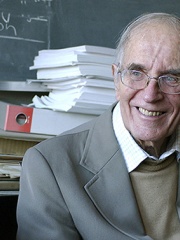
5. Paul Wild (1925 - 2014)
With an HPI of 51.79, Paul Wild is the 5th most famous Swiss Astronomer. His biography has been translated into 24 different languages.
Paul Wild (German: [ˈvɪlt]; 5 October 1925 – 2 July 2014) was a Swiss astronomer and director of the Astronomical Institute of the University of Bern, who discovered numerous comets, asteroids and supernovae.

6. Johann III Bernoulli (1744 - 1807)
With an HPI of 49.55, Johann III Bernoulli is the 6th most famous Swiss Astronomer. His biography has been translated into 17 different languages.
Johann III Bernoulli (also known as Jean; 4 November 1744 in Basel – 13 July 1807 in Berlin), grandson of Johann Bernoulli and son of Johann II Bernoulli, was a Swiss mathematician, philosopher, astronomer and geographer, known around the world as a child prodigy.

7. Nicolas Fatio de Duillier (1664 - 1753)
With an HPI of 46.58, Nicolas Fatio de Duillier is the 7th most famous Swiss Astronomer. His biography has been translated into 22 different languages.
Nicolas Fatio de Duillier (also spelled Faccio or Facio; 16 February 1664 – 10 May 1753) was a mathematician, natural philosopher, astronomer, inventor, and religious campaigner. Born in Basel, Switzerland, Fatio mostly grew up in the then-independent Republic of Geneva, of which he was a citizen, before spending much of his adult life in England and Holland. Fatio is known for his collaboration with Giovanni Domenico Cassini on the correct explanation of the astronomical phenomenon of zodiacal light, for inventing the "push" or "shadow" theory of gravitation, for his close association with both Christiaan Huygens and Isaac Newton, and for his role in the Leibniz–Newton calculus controversy. He also invented and developed the first method for fabricating jewel bearings for mechanical watches and clocks. Elected a Fellow of the Royal Society of London at the age of 24, Fatio never achieved the position and reputation that his early achievements and connections had promised. In 1706 he became involved with a millenarian religious sect, known in London as the "French prophets", and the following year he was sentenced to the pillory for sedition over his role in the publication of the prophecies of Élie Marion, the leader of that sect. Fatio travelled with the French prophets as a missionary, going as far as Smyrna before returning to Holland in 1713, and finally settling in England. His extreme religious views harmed his intellectual reputation, but Fatio continued to pursue technological, scientific, and theological researches until his death at the age of 89.

8. Robert Julius Trumpler (1886 - 1956)
With an HPI of 46.10, Robert Julius Trumpler is the 8th most famous Swiss Astronomer. His biography has been translated into 23 different languages.
Robert Julius Trumpler (until 1915 Robert Trümpler, October 2, 1886, in Zürich, Switzerland – September 10, 1956, in Berkeley, United States) was a Swiss-American astronomer.

9. Robert Emden (1862 - 1940)
With an HPI of 44.36, Robert Emden is the 9th most famous Swiss Astronomer. His biography has been translated into 15 different languages.
Jacob Robert Emden (4 March 1862 – 8 October 1940) was a Swiss astrophysicist and meteorologist. He is best known for his book, Gaskugeln: Anwendungen der mechanischen Wärmetheorie auf kosmologische und meteorologische probleme (Gas spheres: Applications of the mechanical heat theory to cosmological and meteorological problems), published in 1907. It presents a mathematical model of the behaviour of polytropic gaseous stellar objects under the influence of their own gravity, known as the Lane-Emden equation.
Pantheon has 9 people classified as astronomers born between 1664 and 1966. Of these 9, 2 (22.22%) of them are still alive today. The most famous living astronomers include Michel Mayor and Didier Queloz. The most famous deceased astronomers include Jean Philippe Loys de Cheseaux, Rudolf Wolf, and Paul Wild.
Living Astronomers
Go to all RankingsDeceased Astronomers
Go to all Rankings
Jean Philippe Loys de Cheseaux
1718 - 1751
HPI: 54.64
Rudolf Wolf
1816 - 1893
HPI: 53.67
Paul Wild
1925 - 2014
HPI: 51.79
Johann III Bernoulli
1744 - 1807
HPI: 49.55
Nicolas Fatio de Duillier
1664 - 1753
HPI: 46.58
Robert Julius Trumpler
1886 - 1956
HPI: 46.10
Robert Emden
1862 - 1940
HPI: 44.36

Which Astronomers were alive at the same time? This visualization shows the lifespans of the 6 most globally memorable Astronomers since 1700.





